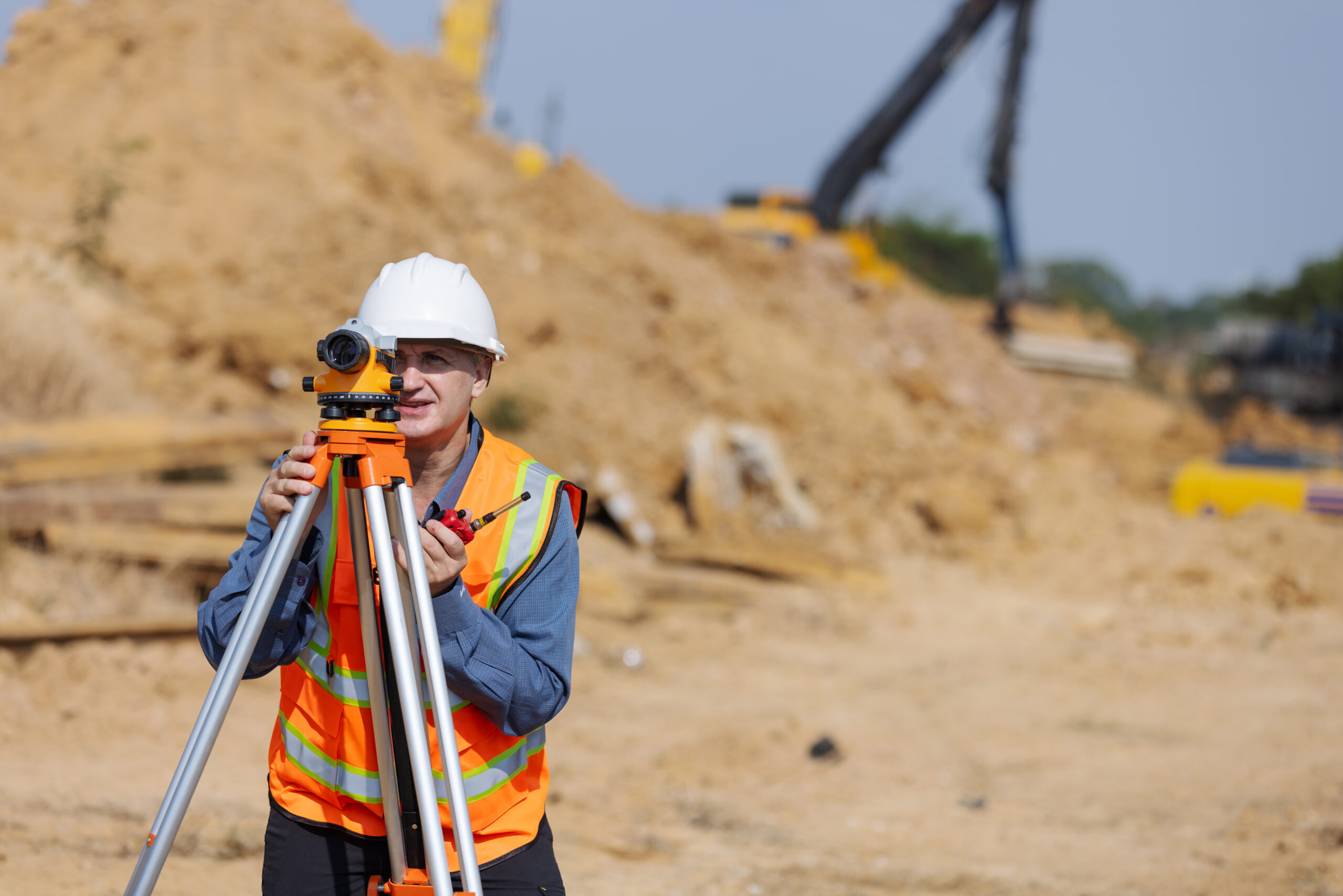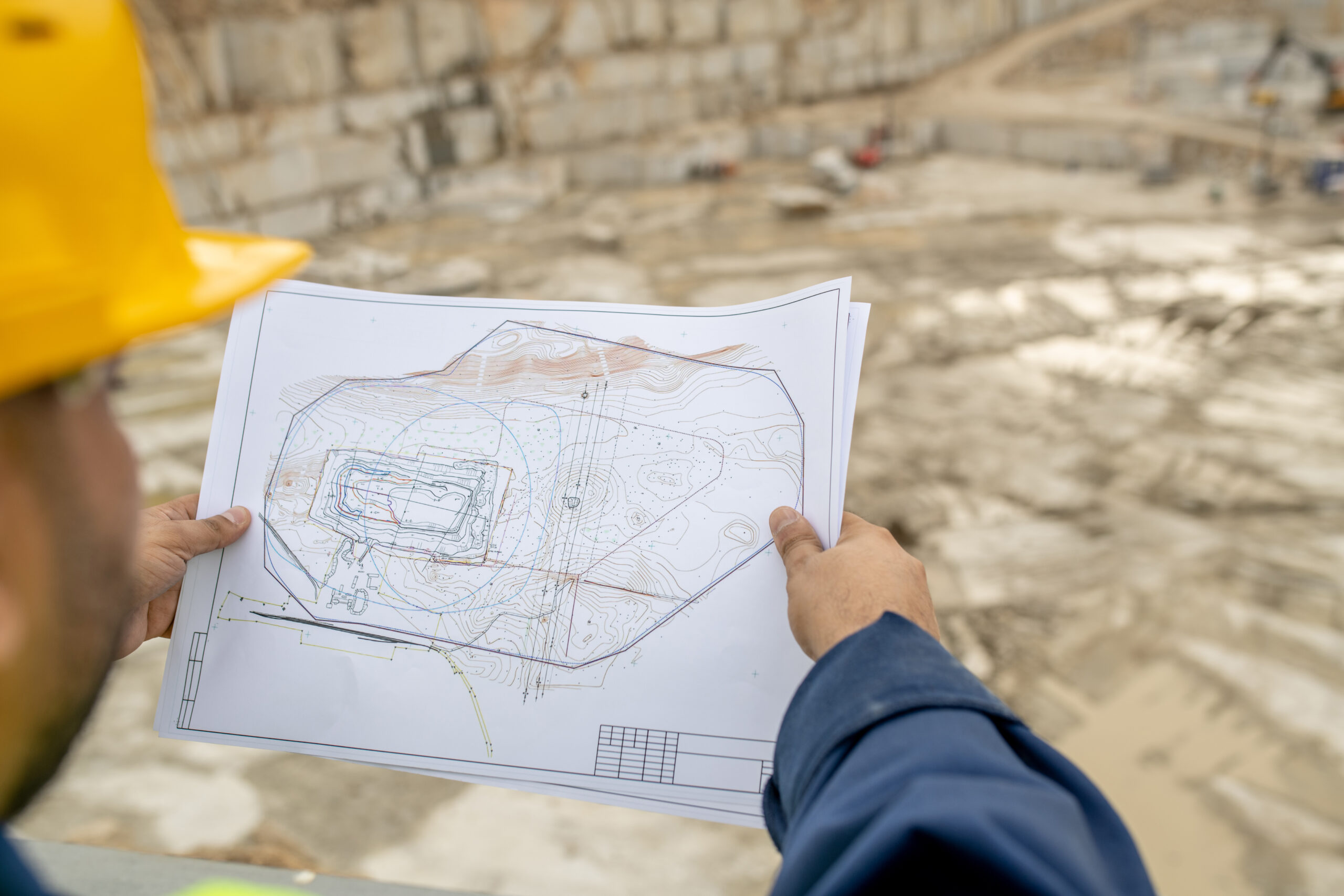Navigating Queensland’s development assessment rules can feel a bit like stepping into a legal maze. There’s a lot to consider, from various documentation requirements to the intricate approval process. Yet, whether you’re planning a small renovation or a major commercial project, having a clear understanding of these regulations is vital. Not only can it save you time, money, and frustration, but it also ensures your development plans run smoothly from start to finish.
Under Chapter 3 of the Planning Act 2016, Queensland’s development assessment process replaced the old Integrated Development Assessment System, setting out the rules that shape how projects can move forward.
But, navigating Queensland’s development assessment rules can feel a bit like stepping into a legal maze. There’s a lot to consider, from various documentation requirements to the intricate approval process. Yet, whether you’re planning a small renovation or a major commercial project, having a clear understanding of these regulations is vital. Not only can it save you time, money, and frustration, but it also ensures your development plans run smoothly from start to finish.
In this guide, we’ll break it all down for you, covering everything from approvals and zoning to the key steps in the process, so you can tackle your development plans with confidence and clarity.
Key Takeaways
- Queensland categorises all development into three types: prohibited (not allowed), accepted (no approval needed), and assessable (requires permits and evaluation)
- Code assessable applications typically receive faster decisions (35 business days) while impact assessable developments require public notification and longer timeframes (45+ days)
- Pre-lodgement consultations with councils can prevent costly delays by clarifying requirements, assessment processes, and potential approval pathways early
- Zoning directly determines what can be built, with overlay codes adding special requirements for flood, heritage, or environmental considerations
- Assessment criteria include planning scheme compliance, environmental impacts, infrastructure needs, traffic considerations, and socio-economic factors
Understanding Development Assessment Rules in Queensland
Queensland’s building and planning framework is built around various development assessment rules, the system that decides if, how, and under what conditions a development can happen. It’s a key part of the state’s broader planning framework, which includes four main pillars: plan-making, community benefit, dispute resolution, and development assessment.
What Is Development Assessment?
Development assessment is the process of reviewing proposed developments against specific assessment categories and requirements. Following a standard process it ensures that every application gets a fair and consistent review, with the right information evaluated by the right people.
The Development Assessment Rules (DA Rules) lay out this process so it works for everyone: applicants, assessment managers, and referral agencies alike. At its core, the process involves five main stages:
- Application: Lodging your development proposal for review.
- Referral: Consulting other agencies if state interests or technical advice is required.
- Information Request: Providing additional details if needed.
- Public Notification: Letting the community know about developments that may affect them.
- Decision: Approval, conditional approval, or refusal.
Not every project goes through all five steps; the pathway depends on the type of development and its potential impact.
Who’s Responsible? Key Authorities
Most development assessments are handled by local governments, which operate under their local planning schemes. Councils determine which developments need approval and what specific requirements must be met.
The state government also plays a role through the State Assessment and Referral Agency (SARA), either as the assessment manager or referral agency when state-level interests are involved. SARA coordinates reviews to ensure developments align with state policies and regulations.
Some special cases involve different authorities. For example, Priority Development Areas (PDAs) fall under the Economic Development Act 2012, with Economic Development Queensland (EDQ) usually taking charge of assessments.
Types of Development
The Planning Act 2016 classifies all development into three categories:
- Prohibited Development: Never allowed. Only the state government can label something as prohibited through the Planning Regulation 2017.
- Accepted Development (Exempt): Doesn’t require an application or approval, though certain rules may still apply. This usually includes low-risk projects that align with local planning goals.
- Assessable Development: Requires approval before work begins and involves lodging a development application. This category is split into:
- Code Assessment: Projects are checked against specific planning scheme codes. Public notice isn’t required, and decisions are generally made within 35 business days.
- Impact Assessment: Projects that could affect nearby land uses require a more thorough review, including public notification. These projects must meet all planning scheme requirements, and decisions usually take 45 business days plus the notification period.
Understanding these distinctions is crucial for planning your project effectively and avoiding delays or compliance issues. Knowing which type of development applies to your project can save you time, money, and headaches down the track.

Types of Development Approvals
When it comes to building or developing in Queensland, knowing which approvals you need can save you time, stress, and costly mistakes. The state has several types of development approvals, each with a clear purpose in keeping projects safe, legal, and aligned with planning rules. Here’s a breakdown of the key ones you should know:
1. Development Permits
Development permits are the most common and often the first step in the assessment process. They allow assessable developments to proceed, sometimes with specific conditions attached. You’ll typically need a development permit for projects like:
- Building work, including new structures or major renovations
- Plumbing or drainage installations
- Operational work such as earthworks or infrastructure upgrades
- Reconfiguring a lot (subdividing or merging land parcels)
- Material change of use, such as turning a house into a small business
- Clearing native vegetation
- Demolition of existing buildings
Local councils issue these permits, and they are essential because construction cannot legally start without them. Think of development permits as your “green light” to get your project moving.
2. Building Approvals
While development permits focus on what you’re allowed to do with the land, building approvals focus on how the construction is carried out. Even if a development application isn’t required, you may still need a building approval to make sure your project meets safety and construction standards. Key points include:
- Compliance with the National Construction Code (NCC) and the Queensland Development Code
- Plans reviewed and approved by a qualified building certifier
- Inspections conducted during construction to ensure standards are met
- Issuance of a Certificate of Occupancy once the building is deemed safe and compliant
Building approvals give you confidence that your project is structurally sound and compliant with the law, keeping future headaches at bay.
3. Operational Works Approvals
Operational works cover activities that impact the land but aren’t strictly building or plumbing work. These approvals are often required to meet conditions from previous planning approvals and can include:
- Earthworks exceeding 500m³ in rural zones
- Installation or upgrading of infrastructure like roads, stormwater, sewerage, or water systems
- Landscaping or large-scale vegetation clearing
- Construction of non-standard driveways or access ways
These approvals ensure that any modifications to the land or its infrastructure are safe, sustainable, and compliant with environmental and local regulations.
4. Reconfiguring a Lot (ROL) Approvals
ROL approvals are necessary when you want to subdivide or rearrange land. This can involve:
- Splitting a large parcel into smaller lots
- Adjusting boundaries between lots
- Creating community title schemes
- Establishing access easements
ROL approvals are linked to the land itself, meaning the conditions stay in place even after lots are sold. Zone and overlay requirements determine things like minimum lot sizes, and most subdivisions are assessed through a code assessment against the relevant planning scheme. These approvals are crucial for ensuring orderly development that aligns with community planning objectives.
5. Material Change of Use (MCU)
Material Change of Use approvals are required whenever there’s a significant change in how land or a building is used. This can include:
- Starting a completely new use, like converting a residential property into a small café
- Re-establishing a previously abandoned use
- Changing the scale or intensity of an existing use, such as expanding a retail store or increasing accommodation capacity
MCU approvals make sure your plans fit with the intended zoning, meet environmental requirements, and consider infrastructure, traffic, and community impacts. They provide a safeguard for both developers and the wider community, balancing growth with liveability.

Key Legislation Governing Development in Queensland
Queensland’s development assessment rules system doesn’t exist in a vacuum, it’s guided by a structured legislative framework that ensures development is fair, efficient, and sustainable. From state-level Acts to local government planning schemes, these rules work together to provide clarity for developers, councils, and the community.
1. Planning Act 2016
The Planning Act 2016 is Queensland’s principal legislation for land use and development assessment. Its purpose is to create an efficient, accountable system that balances economic growth with environmental protection and community wellbeing.
- Chapter 3 of the Act sets out the framework for development assessment.
- The Development Assessment Rules (DA) handle the procedural side, explaining how applications are lodged, assessed, and decided across the state.
- The Act categorises development into three main types: prohibited, assessable, and accepted development.
The Planning Regulation 2017 complements the Act by explaining how it works in practice, giving developers and councils practical guidance for applying the law correctly.
2. Sustainable Planning Act 2009 (SPA)
Before the Planning Act 2016, Queensland operated under the Sustainable Planning Act 2009 (SPA). While SPA was replaced on 3 July 2017, it’s still relevant in some cases:
- Applications submitted before the Planning Act came into effect are assessed under SPA.
- Development approvals issued under SPA that require compliance checks still follow SPA provisions through transitional arrangements.
Understanding SPA is important for legacy projects and compliance matters that carry over from before 2017.
3. Local Planning Schemes and Policies
Queensland has 77 local governments, each responsible for a local planning scheme. These schemes:
- Guide growth and development in their areas
- Determine what developments are allowed and under what conditions
- Work in tandem with state and regional policies, such as the State Planning Policy and regional plans
Local planning schemes are approved by the Planning Minister, ensuring they align with state objectives. Councils must review their schemes every ten years to keep them current, effective, and responsive to changing community needs. The Minister’s Guidelines and Rules (MGR) provide the framework for creating or updating these local planning tools.
Zoning and Land Use Considerations
In Queensland, every parcel of land belongs to a specific zone, and your zone plays a huge role in shaping what you can, and can’t, do with your property. Zones provide the foundation for development assessment, helping councils balance community needs, environmental protection, and responsible growth.
Queensland’s planning schemes generally feature four main zone types:
- Residential Zones: Designed for housing, from quiet suburban streets with single homes to busier areas with townhouses or high-rise apartments. Some residential zones allow small-scale businesses, like corner shops or medical offices.
- Commercial Zones: Home to shops, restaurants, offices, and other businesses. These zones create hubs of activity, often near major roads and public transport.
- Industrial Zones: These areas accommodate manufacturing, warehouses, and other heavy operations. They are located away from homes to reduce noise, traffic, and pollution issues.
- Rural Zones: Focused on agriculture, forestry, and mining. Rules here regulate water use, fertiliser, and pesticide application to protect natural resources.
How Zoning Affects Development Assessment
Your property’s zone determines not just what you can build, but also how you can build it. Each zone comes with rules about:
- Building height and density
- Lot size and boundaries
- Setbacks and distances from other properties
- Allowed uses and activities
Ignoring zoning rules can lead to delays, extra costs, or even rejected applications, so it’s critical to understand your zone before starting any project.
Overlay Codes – Extra Rules for Special Areas
Some areas have additional considerations called overlay codes. These overlays add rules for properties with unique features or risks, such as:
- Flood hazard areas
- Heritage sites
- Environmental areas
- Bushfire-prone land
Properties with overlays can still be developed, but your plans must comply with the overlay’s specific requirements. Think of overlays as an extra layer of planning protection, ensuring developments are safe, sustainable, and respectful of Queensland’s unique landscapes and heritage.
Height, Lot Size, and Density Rules in Urban Planning
When planning a development in Queensland, understanding the rules around building height, lot size, and density is crucial. These controls ensure that urban growth is well-managed, neighbourhoods maintain their character, and infrastructure can support the community.
Height Limits in Low vs. High-Density Zones
Building height limits vary depending on the zone and its density designation:
- Low-density residential areas: Structures generally must stay under 8.5 meters, though sloping land up to 15% may allow up to 10 meters.
- Low-Medium Residential zones (e.g., parts of Brisbane): Buildings can reach 5 storeys.
- Urban Neighbourhood precincts: Offer more flexibility, with buildings permitted up to 27 meters.
These rules help maintain neighbourhood character while accommodating taller buildings where urban density and infrastructure allow.
Minimum Lot Size Requirements by Council
Lot size requirements differ across councils and zones:
- Standard residential lots: Typically 400–600m².
- Moreton Bay Regional Council suburban neighbourhoods: Require 600m² minimum.
- City centre zones within 200 meters of Brisbane’s CBD: Can be as small as 300m².
- Rural zones: Require much larger lots, sometimes up to 100 hectares, to protect agricultural land and natural resources.
Understanding lot size rules is essential before purchasing or subdividing land, as non-compliance can delay approvals or result in redesigns.
Density Controls and Multi-Dwelling Approvals
Density rules determine how many dwellings can be built per hectare:
- Suburban areas: Typically allow 10–15 dwellings per hectare.
- Next Generation Neighbourhood precincts: Permit up to 25 dwellings per hectare.
- Urban Neighbourhood precincts: Require a minimum of 45 dwellings per hectare.
When submitting multi-dwelling applications, your project must comply with both the density limits and height restrictions of the relevant zone. These controls ensure developments fit within the neighbourhood’s character while providing enough housing to meet community demand.

Step-by-Step Breakdown of the Development Assessment Process
1. Pre-Lodgement Advice and Consultations
Before submitting a formal application, it’s smart to book a pre-lodgement meeting with your local council. These consultations:
- Clarify application requirements
- Identify high-risk issues
- Discuss potential approval pathways
- Explain fees, timeframes, and assessment processes
Most councils recommend booking these meetings at least four weeks before lodgement. While pre-lodgement advice can’t guarantee an outcome, it helps prevent unnecessary delays and ensures your application is as complete as possible.
2. Lodging a Development Application
A complete development application includes:
- Relevant forms (e.g., DA Form 1)
- Owner’s consent documents
- Proposal plans
- Supporting reports (engineering, environmental, traffic, etc.)
Once lodged, the council conducts an initial review to confirm compliance with the Planning Act 2016. If everything is in order, you’ll receive a confirmation notice within 5 business days.
3. Public Notification and Community Consultation
For impact assessable developments, public notification is required. This process includes:
- Displaying a notice on the property
- Notifying adjoining landowners in writing
- Publishing a notice in a local newspaper
Notification periods usually last 15–30 days, giving the community time to review the proposal and provide feedback.
4. Assessment and Conditions Imposed by the Council
The assessment manager reviews your application against:
- Relevant legislation and planning schemes
- Applicable codes and Australian Standards
- State planning policies
The council may request additional information within 10 business days of confirmation, and applicants typically have 3 months to respond. Assessment covers planning compliance, environmental impacts, infrastructure, and traffic considerations.
5. Decision: Approval, Approval with Conditions, or Refusal
Once the assessment is complete, applicants receive a decision notice within 5 business days.
- Approval: Usually comes with conditions that must be met before work begins
- Approval with conditions: Specifies obligations for compliance
- Refusal: Includes detailed reasons explaining why the application was not approved
6. Typical Timelines for Applications
- Code assessable applications: ~35 business days
- Impact assessable applications: ~45 business days plus notification time
- Priority Development Area (PDA) applications: 40 business days under the Economic Development Act

Key Assessment Criteria
When reviewing development applications in Queensland, authorities carefully evaluate proposals against a set of key criteria to ensure compliance, safety, and community benefit. Understanding what assessment managers look for can help you prepare stronger applications and avoid costly delays.
Compliance with Planning Schemes and Codes
Local government planning schemes set the benchmark for development approvals. For code-accessible applications, approval is generally granted if the proposal meets these benchmarks or can be adjusted with conditions. Refusal only occurs if no conditions can make the development compliant.
For impact assessable applications, compliance requirements go beyond specific codes, ensuring developments align with broader planning and community objectives. This ensures that all developments contribute positively to the surrounding area and meet established standards.
Environmental Impact Considerations
Projects that may affect the environment are closely scrutinised. Assessments focus on the effects on threatened species and habitats, areas of high ecological or conservation value, and sensitive regions where erosion risk must be carefully managed.
Compliance with environmental significance overlays is essential to protect biodiversity and natural assets. These environmental assessments are vital to maintaining Queensland’s unique landscapes while allowing responsible development.
Infrastructure and Services Requirements
Local Government Infrastructure Plans (LGIPs) outline essential infrastructure needs for development areas, covering water, sewerage, transport networks, stormwater management, and public parks or recreation spaces.
These plans ensure that new developments integrate seamlessly with existing infrastructure, guide future upgrades, and provide councils with a framework for estimating long-term infrastructure costs. Planning with these requirements in mind helps avoid unnecessary delays or added expenses.
Traffic, Parking, and Transport Considerations
Traffic impacts are a key focus, particularly for developments that significantly increase vehicle movements. Assessments consider safety at access points, the types and volume of vehicles generated, compatibility with existing road networks, and broader effects on state-controlled roads.
The Guide to Traffic Impact Assessment sets principles for assessing changes, especially where development increases traffic by 5% or more. Careful traffic planning ensures that developments support smooth transport flows and maintain community safety.
Social and Economic Factors
For larger developments, social impact assessments evaluate how a project affects the local community. This includes examining community engagement, workforce management, housing demand, local business procurement, and cultural or lifestyle impacts.
Assessments also consider physical and mental health outcomes for residents. By considering these factors, authorities ensure that developments enhance community well-being and balance economic growth with social responsibility, rather than creating unintended disruptions.

Navigating Queensland’s Development Assessment Rules with Confidence
Queensland’s development assessment rules can seem complex, but with the right understanding and planning, navigating them becomes much more manageable. While the regulations exist to protect community needs and environmental values, they also provide a structured pathway for turning development ideas into reality.
From the Planning Act 2016 and its clear processes for code and impact assessable developments, to local planning schemes and zoning regulations, knowing the rules helps you make informed decisions about what you can build and where. Each application type has its own timeline, from pre-lodgement consultations to final decisions, and complying with these requirements ensures smoother approvals and fewer delays.
At Level Up Surveying, we support clients across the Sunshine Coast with innovative surveying solutions. With over 20 years of experience, our team delivers accurate, reliable data that empowers smart decisions and drives successful outcomes for projects of all sizes.
Take the first step toward a successful development project today. Contact Level Up Surveying to discuss your plans, get expert guidance, and ensure your project stays on track from concept to completion. Let us provide the insights and precision you need to navigate Queensland’s development assessment rules process with confidence.


